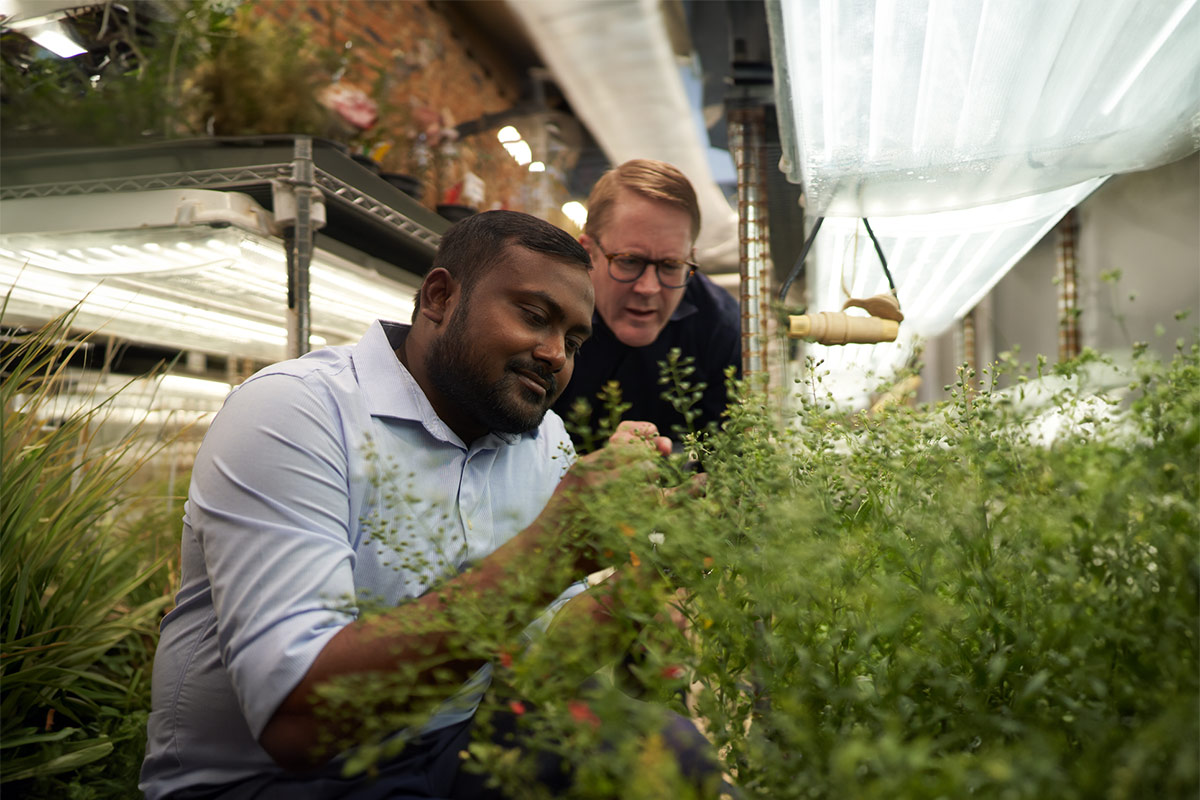The underappreciated role of pods and siliques to developing seeds
Plants harness energy from sunlight and carbon dioxide through a process called photosynthesis which supports the generation of carbohydrates, proteins, and oils that are stored in seeds – like a kernel of corn, a soybean, or a grain of rice. Seeds are a critical resource for humans as food, fodder, and fuel.
Under the direction of Doug Allen, USDA-Agricultural Research Service scientist and member at the Danforth Center, a team of scientists led by Somnath Koley, research scientist at the Danforth Center, discovered that the pods, sometimes called siliques, which serve as protective coverings surrounding developing seeds, play an underappreciated and significant role in photosynthesis, supporting seed development and higher seed yield. Their findings challenge the misconception that leaves are solely responsible for capturing light and carbon dioxide in plants. This work was published in the journal Science Advances, titled, “Metabolic synergy in Camelina reproductive tissues for seed development.”

Pods provide untapped potential for plant productivity through photosynthesis
The researchers were inspired to examine the role of siliques in Camelina plants after observing their bright green hues and elevated position at the top of the plant. Unlike leaves, many of which start to wither as the Camelina plant develops, siliques are green and have a significant surface area exposed to sunlight during the time that seeds are filling. Their unique positioning at the top of the plant allows the siliques unimpeded access to sunlight, which can power the assimilation of carbon dioxide from the atmosphere. Their innately close proximity to developing seeds provides a targeted source of carbon for seed development.
“One of the most exciting takeaways from this study,” Koley, research scientist at the Danforth Center, noted, “is the unexplored photosynthetic potential of green siliques and their contribution to plant productivity.” The ability to enhance the photosynthetic capacity of different tissues on the plant that are exposed to sunlight could potentially lead to higher seed yields, improving crop productivity, a promising implication for the agricultural industry. Indeed, the findings of this study open the doors to explore phenomena in other crops that are similar to Camelina, such as canola, pennycress, or soybean, some of which have documented roles for ‘green’ metabolism within the seed itself.
The findings support an additional temporal synergy between the timing of photosynthetic activity in the silique and the process of seed filling. “The siliques’ temporal development immediately prior to seeds and close proximity provide a focused, just-in-time delivery system of nutrients to the seeds contained within,” Allen, a RIPE principal investigator, pointed out, “in the latter part of the plant’s lifecycle when the seeds need nutrients to fill, thus describing an undocumented synergy across tissues.” In other words, the siliques are fueling growth exactly when and where it is needed by seeds.
What’s next?
This study ‘sheds light’ on the often-overlooked role of pods and siliques in seed development and yield. By recognizing the photosynthetic capacity of the pod, the researchers revealed a new avenue for enhancing crop productivity and improving agricultural practices. The Allen Lab, with the help of an NSF-REU student this summer, are similarly studying silique photosynthesis in a species called pennycress, which, interestingly, has few leaves left by the time of seed set and may have equally or more dramatic effects. This and other work in the Allen lab aim to elucidate the emergent properties of plant tissues and organs that likely serve multiple roles for the benefit of the plant and are more complicated than overly simplistic textbook descriptions. The synergy of tissues beyond leaves that contribute to seed yield through photosynthesis presents a unique paradigm for future agriculture and crop development.
Interested in Allen’s work? As of publication on 7/18/23, the Allen Lab has an opening for a postdoctoral researcher. Learn more on RIPE’s Join Our Team page.
RELATED RIPE OBJECTIVES
Photorespiratory Bypass